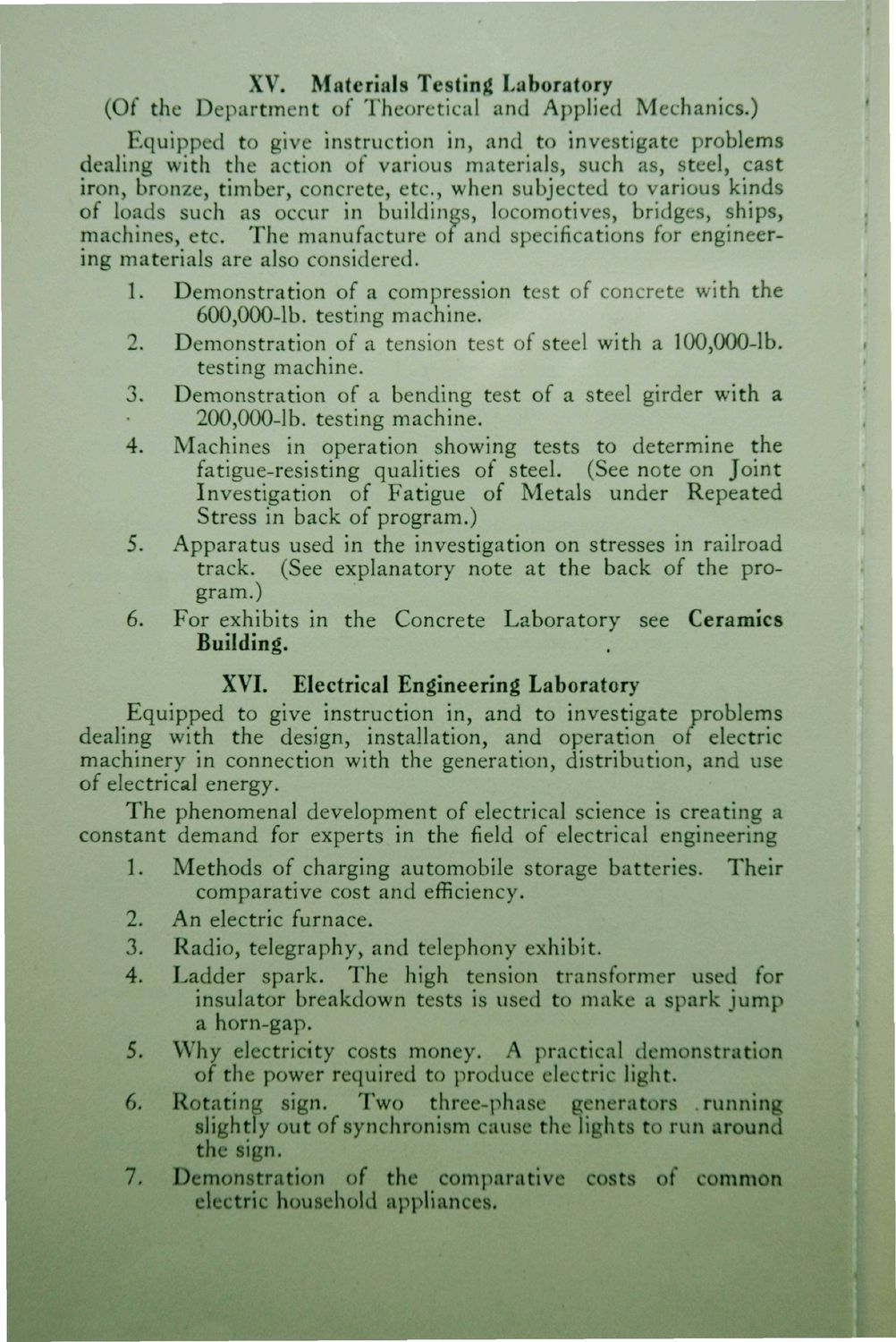| |
| |
Caption: Engineering Open House Guide - 1920 (Watt Centennial)
This is a reduced-resolution page image for fast online browsing.

EXTRACTED TEXT FROM PAGE:
XV. Materials Testing Laboratory (Of the Department of Theoretical and Applied Mechanics.) Equipped to give instruction in, and to investigate problems dealing with the action of various materials, such as, steel, cast iron, bronze, timber, concrete, etc., when subjected to various kinds of loads such as occur in buildings, locomotives, bridges, ships, machines, etc. The manufacture of and specifications for engineering materials are also considered. 1. Demonstration of a compression test of concrete with the 600,0004b. testing machine. 2. Demonstration of a tension test of steel with a 100,000Jb. testing machine. 3. Demonstration of a bending test of a steel girder with a 200,000-lb. testing machine. 4. Machines in operation showing tests to determine the fatigue-resisting qualities of steel. (See note on Joint Investigation of Fatigue of Metals under Repeated Stress in back of program.) 5. Apparatus used in the investigation on stresses in railroad track. (See explanatory note at the back of the program.) 6. For exhibits in the Concrete Laboratory see Ceramics Building. XVI. Electrical Engineering Laboratory Equipped to give instruction in, and to investigate problems dealing with the design, installation, and operation of electric machinery in connection with the generation, distribution, and use of electrical energy. The phenomenal development of electrical science is creating a constant demand for experts in the field of electrical engineering 1. Methods of charging automobile storage batteries. Their comparative cost and efficiency. 2. An electric furnace. 3. Radio, telegraphy, and telephony exhibit. 4. Ladder spark. The high tension transformer used for insulator breakdown tests is used to make a spark jump a horn-gap. 5. Why electricity costs money. A practical demonstration of the power required to produce electric light. 6. Rotating sign. Two three-phase generators .running slightly out of synchronism cause the lights to run around the sign. 7. Demonstration of the comparative costs of common electric household appliances.
| |